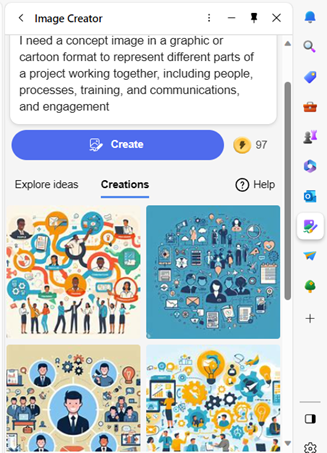Benefits and Limitations of Hybrid Cloud Video Storage
Hybrid Cloud Video Storage
Hybrid cloud security systems use a combination of onboard camera storage with a cloud data storage solution. These systems often provide a wealth of benefits over standard Internet protocol (IP) security camera offerings and give users a greater degree of flexibility than pure cloud cameras—which require a consistent Internet connection consuming large amounts of network bandwidth.
What is a Hybrid Cloud Security System?
Because hybrid cloud systems dramatically decrease the amount of bandwidth required, the system is highly suitable for larger scale deployments that require a multitude of cameras to operate on the same network. This makes the hybrid cloud approach to video security a great option for retail stores, schools, municipalities, manufacturers and other security-conscious organizations that need coverage across large open areas.
How Do Hybrid Cloud Surveillance Systems Work?
Having only recently entered the market, hybrid cloud video storage approaches decade old problems (i.e. storage limitations, gaps in coverage, limited scalability) with a software-first mindset.
- NVR & DVR Camera System vs. Hybrid Cloud Surveillance: By removing the dependency of centralized recorders (i.e. network video recorders), hybrid cloud cameras are easier to install and scale across locations. With solid-state drives built into each camera, there is no worry of losing footage across any entire wing of a building should a local recorder fail. Maintaining a hybrid cloud video security system is also significantly easier than a NVR camera system. With firmware and software updates that deploy across the entire fleet automatically, eliminate the need to conduct timely audits and manual updates.
- Cloud Storage vs. Hybrid Cloud Video Storage: Rather than consuming large amounts of bandwidth by streaming footage continuously to the cloud, hybrid cloud cameras upload only select metadata and activity-triggered footage. As a result, hybrid cloud surveillance solutions are optimal for low-bandwidth situations, as they are able to perform reliably, even over an LTE network. With the added reliability of local storage, hybrid cloud cameras are uninterrupted in the event of network outages, making it more dependable than cloud cameras.
Main Features of Hybrid Cloud Security Systems
Discover some of the main features of hybrid cloud video security and see how they offer enterprise-level businesses the best of both worlds when it comes to security and storage.
- Cloud & Local Video Storage: Traditional security solutions, which depend on a consistent Internet connection or centralized recorders (i.e. NVR, DVR) for all cameras, are always at the risk of losing coverage. However, hybrid cloud cameras eliminate any single point of failure, as they record and store all footage locally on the camera and in the cloud. With this distributed approach to storing video footage, ensure continuous recording and no gaps in surveillance footage.
- Bandwidth Friendly: Unlike cloud camera systems, which continuously upload large amounts of video data to the cloud, hybrid cloud solutions benefit from retaining footage locally while using minimal network data to upload metadata and thumbnails to the cloud. Hybrid cloud surveillance is optimal for use in remote areas, as it requires significantly less bandwidth than cloud camera systems.
- Highly Scalable: Compared to a traditional NVR/DVR solution–which often has a quantity cap on the amount cameras it can support–hybrid cloud surveillance scales with the needs of your business. Since there is no need for a centralized recording device to support on-premise recording, hybrid cloud cameras can be installed without the worry of added infrastructure.
- Easy to Install: Many security vendors offer hybrid cloud camera systems that only require a PoE (power-over-Ethernet) connection to get started. This makes these surveillance solutions particularly easy to implement and well-suited for businesses that need to evolve their video security without having to invest in additional infrastructure.
- Cost-Effective: Many security vendors that offer hybrid cloud solutions provide simple cost breakdowns, making it easy to forecast recurring costs. Rather than unpredictable expenses associated with installation, maintenance, and storage (i.e. operating system updates, maintaining storage servers, costs for technical configurations), simplify total cost of ownership over time with vendors that disclose complete line items and associated costs.
Benefits of Hybrid Cloud Security System
- Scalable: Without the need for centralized recorders, such as NVRs and DVRs, hybrid cloud systems are highly scalable without having to fit the needs of other infrastructure and system dependencies.
- Secure and Reliable: With onboard storage, hybrid cloud surveillance solutions offer increased reliability for video retention while also being more secure without open and exposed centralized recorders and computers for direct system access.
- Remote Access: Similar to cloud-based solutions, hybrid cloud cameras offer the ability to access footage from nearly anywhere with an Internet connection.
- Bandwidth Friendly: Hybrid cloud cameras store all footage onboard the camera and only send data when needed or when users stream footage. The result is a lower bandwidth footprint across the entire system, ensuring better performance for other network devices and no increased costs.
- Low Maintenance: Many security vendors offering hybrid cloud surveillance solutions have firmware and software updates that deploy automatically, meaning less time and effort is required of IT teams, facility managers, and business owners.
- Flexible Installations: With just a PoE connection, hybrid cloud cameras can be installed virtually anywhere with an Internet connection.
- Configurable Video Retention: Some regulations dictate that those in possession of security cameras must ensure they have access to footage for 90 days or more. Many hybrid cloud cameras come in different options for onboard storage, ensuring these businesses have the right storage to meet their needs.
Takeaways About Hybrid Cloud Video Storage
All things considered, it’s worth exploring what a hybrid cloud video security system can provide for enterprise-level businesses. This new approach to storing video footage–specifically for enterprise video security–makes it simple for IT, Security, and Loss Prevention professionals to find confidence in surveillance without worrying about storage limitations or gaps in coverage.





